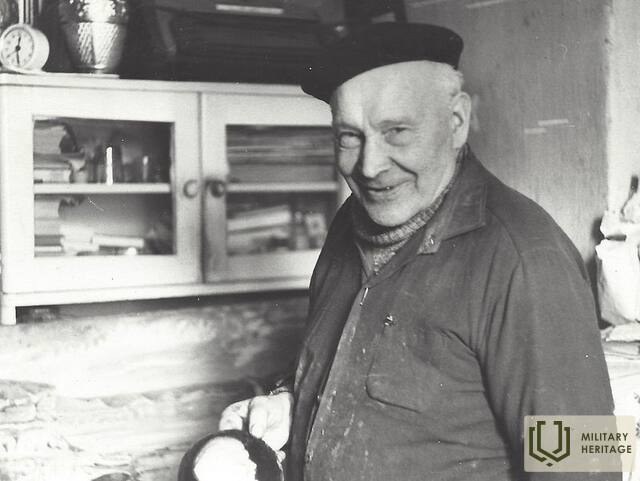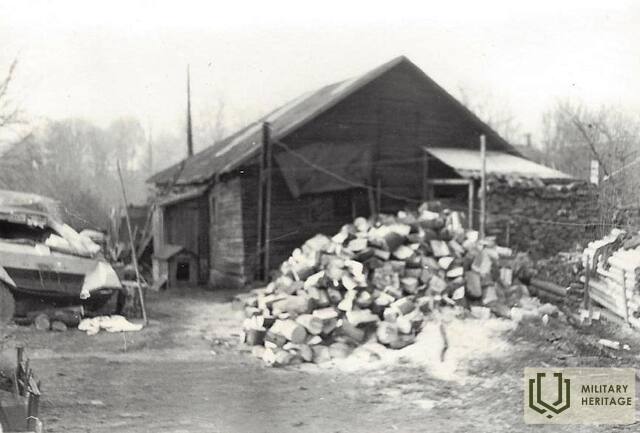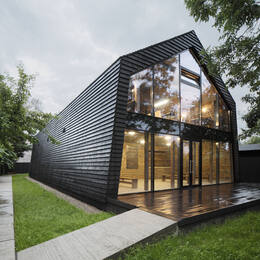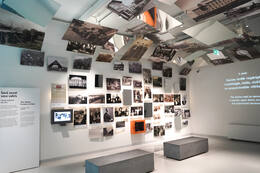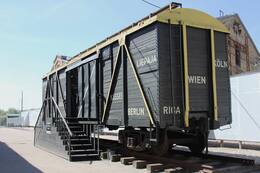Prisiminimai apie Žanį Lipkę
Po sovietų okupacijos sekė vokiečių okupacija. Naciai įvykdė nusikaltimus prieš Latvijos žmones. Viena iš tokių etninių grupių buvo žydai. Iš pradžių buvo kuriami getai, bet vėliau prasidėjo žydų naikinimas. Daugelis latvių išgelbėjo žydus nuo sunaikinimo. Vienas iš jų – Žanis Lipke.
„(..)“Į sutartą vietą atvyko tiksliai taip, kaip buvo žadėta – penktą valandą ryto. Mačiau jį kaip įspūdingą, tvirto sudėjimo vyrą, 40–45 metų amžiaus. Jūreivio sijonas ir, nepaisant šalto oro, jūreivio kepurė ant galvos. Jis įdėmiai pažiūrėjo į mane. Vėliau jis pasakojo, kad jau pirmosiomis mūsų pažinties minutėmis nusprendė, kad aš galiu paruošti naują bazę pabėgėliams iš geto. Aš taip pat nuo pirmos akimirkos pradėjau visiškai pasitikėti šiuo žmogumi. Sieloje jaučiau, kad jis negali manęs išduoti. Jo savitvarda ir santūrumas suteikė viltingą pasitikėjimą savo jėgomis.
Sakė tuoj pat išeiti. Kur? Iš kažkokių neaiškių frazių supratau, kad teks pasiekti kažkokius kaimo namus. Bandydamas atvirai pasakyti Lipkei pasakiau, kad, deja, net neturiu pinigų tramvajui ir negalėsiu jam atsidėkoti už rūpestį. Žanis mane pertraukė: "Ką tu kalbi! Ar aš pas tave atėjau dėl pinigų!?""(..)"
Willie Frisch prisimena Zhan Lipki knygoje „Kaip žvaigždė tamsoje“.
Susijusi laiko juosta
Susijusios temos
Susijusios vietos
Žanis Lipke Memorial
The Žanis Lipke memorial is located in Ķīpsala, Riga. The Žanis Lipke Museum is probably one of the most hidden museums in Riga. The obscure location of the memorial is not a coincidence and it has a symbolic meaning. It has been set up in the location of a former underground hideout that was created to save people during the German occupation of World War II. Here Žanis Lipke and his family rescued 55 Jews. Nowadays a memorial has been built next to the Žanis Lipke family house. The memorial ‘Black Shed’ is a symbolic building where shelter was provided and received. The design of the building has been taken from the historical tarred huts of Ķīpsala fishermen and sailors. These huts were built using materials from barges; hence they had a very distinct colour and tar smell. But not only the story of this historic place is unique. The way the museum communicates its message is also quite notable. The overall design has similarities with the Noah’s Ark described in the Bible, and it also resembles a boat that has been pulled ashore and overturned – a boat that has fulfilled its task. The concept of this memorial draws from the historic accuracy of this place and story and the testimonies associated with it. It is a story of a desire for freedom, unbelievable escape and trust. On your way to the museum, you’ll also be able to see the historic buildings of Pārdaugava.
Latvijos okupacijos muziejus
Muziejuje eksponuojama Latvijos istorija nuo 1940 iki 1991 m., nacistinės Vokietijos ir Sovietų Sąjungos okupacijos laikotarpiu. „Ateities namai“ – tai žinomo Amerikos latvių architekto Gunāro Birkertaus suprojektuoto Okupacijos muziejaus rekonstrukcijos ir išplėtimo projektas, taip pat nauja muziejaus ekspozicija. Ekspoziciją „Čekos istorija Latvijoje“ sukūrė Okupacijos muziejus, ji yra buvusiame SSRS Valstybės saugumo komiteto (KGB) pastate „Kampiniame name“. Latvijos okupacijos muziejus buvo įkurtas 1993 m. Jis pasakoja ilgai slėptą Latvijos valstybės, tautos ir žemės likimo istoriją dviejų užsienio totalitarinių valstybių okupacijos laikotarpiu nuo 1940 iki 1991 m. 2020 m. pabaigoje muziejuje buvo daugiau nei 70 000 įvairių istorinių eksponatų (dokumentų, nuotraukų, rašytinių, žodinių ir daiktinių įrodymų, daiktų ir atminimo dovanų). Muziejaus specialistai įrašė daugiau nei 2400 vaizdo įrašų, todėl tai viena didžiausių okupacijos kolekcijų Europoje. Latvijoje, Lietuvoje ir Estijoje klostęsi įvykiai aiškiai parodo, ką tautoms teko ištverti valdant dviem totalitariniams režimams.
Riga Ghetto and Latvian Holocaust Museum
The Riga Ghetto and the Latvian Holocaust Museum is located in Riga close to the Riga Central Market and the Riga Central Station. The museum was opened in 2010 on the site where the city's warehouses once were. It is located in the historical part of the city, next to the border of the former Jewish ghetto. The territory of the ghetto is unique, because in terms of architecture it has not changed since World War II. It is a memorial dedicated to the tragedy suffered by the Jewish people. The German policy regarding the Jewish population in Latvia until the end of 1939 was for the German diplomats and politicians to try and pressure the Latvian government to take action against the Jews by restricting their freedom. After the emigration of the Baltic Germans in 1939, the German embassy no longer had as good an access to information on the mood of the population and the events happening in Latvia as before. When the Red Army occupied Latvia, they manipulated the society to gain some support of the Jewish population for the new occupying power. However, after the regime started a crackdown on the society as a whole, the support fell rapidly. As a result of all this, a deep divide had formed between the people. And later on, the next regime – Germany – tried to exploit it. They hoped that the local population would harass and attack the Jews, but that did not happen. So, Germany adjusted their approach and devised a new plan to initially establish a Jewish ghetto and later destroy its inhabitants.




